As a K-12 school looking to resonate with parents through your marketing efforts, there are specific best practices that you should implement to optimize your results. Marketing to the parents of young ones is empathetic, with few decision-makers being as selective and thorough in their research as guardians who desire only the best for their children. How can you design your marketing strategy to appeal to those seeking educational excellence, especially the ones who matter most to them? We have plenty of effective strategies for creating and sharing.
Today, we’ll explore the motivations of parents as key decision-makers, focusing on the strategies that respect their concerns, cater to their needs, and, ultimately, win their trust. Learn how to create and distribute effective targeted ads for this specific audience. We’ll explore how to effectively emphasize unique ad selling points, leverage retargeting strategies, highlight accreditation and awards, and create target social media campaigns. As you discover advertising best practices for targeting the parents of young students, remember to be guided by empathy as you center efforts on demonstrating your educational value.
Emphasizing Unique Selling Points In Ads Targeting K-12 Students’ Parents
There have never been more options for parents to explore educational paths for their children. Brand differentiation is vital for any K-12 school looking to appeal to parents with high expectations of their children’s schools. With that thought in mind, how do you target parents in marketing?
If we examine the primary intent behind advertising your school, we’ll find that highlighting your value and improving school website visibility is central to your marketing strategy. Emphasizing your unique selling points (USPs) is a highly effective way to differentiate your school brand and highlight what makes your educational experience valuable.
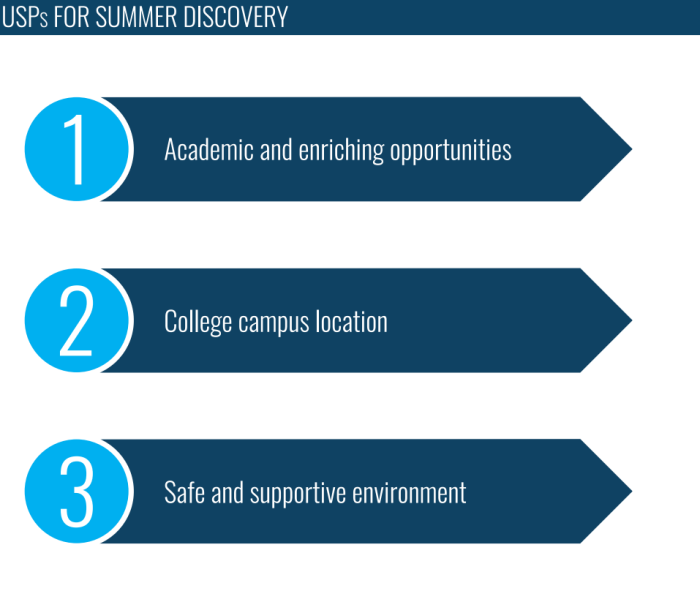
Source: HEM
Example: When developing inbound strategies for schools, HEM includes unique selling points that remain central to our content creation. The example above shows what your unique selling points could be. Think: what makes your institution truly one of a kind?
Unique selling points refer to the distinct characteristics or features of an educational institution or program that set it apart from competitors. These points are used to attract and persuade potential students, parents, or other stakeholders to choose that institution or program over others. Throughout this process, focus on determining whether your school is unique and how each unique characteristic could appeal to parents. Let’s explore practical strategies for highlighting your school’s unique ad selling points.
Demonstrate Educational Value By Highlighting Special Programs And Extracurriculars
In the modern educational landscape, extracurricular activities and specialized educational programs significantly impact parents’ decision-making. Research has consistently demonstrated that students actively participating in extracurricular activities perform better academically.
Parents value the academic skills your educational programs provide for their children, but holistic learning is also becoming increasingly important. Your school’s specialized academic programs are holistically enriching as they encourage students to develop strong soft skills that foster positive social, emotional, and physical development.
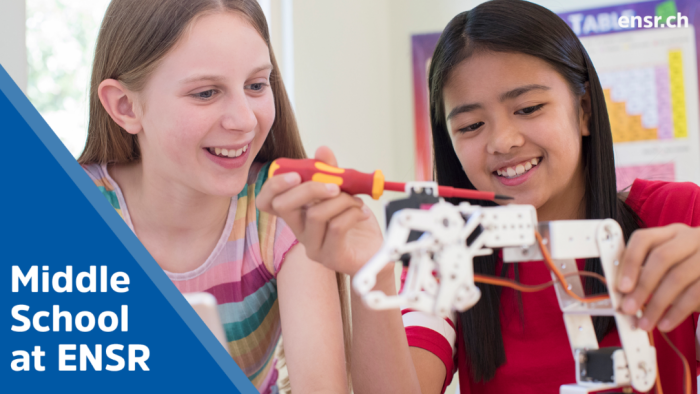
Source: ENSR
Example: Here, ENSR uses a PPC ad to display how their middle school program provides students with cutting-edge technological skills. How does your K-12 school instill cutting-edge industry skills? Put your tech programs on display.
In an increasingly challenging job market, parents want to ensure their children have the skills to thrive professionally. Optimize your ad campaigns by highlighting how your school opens up future opportunities, enriches college applications, and keeps students well-versed in technological advancements that will enable them to seize future opportunities. Robotics, environmental science, performance arts, and leadership training are particularly attractive to parents who want their children’s competencies to align with market trends.
Show Parents How You Prioritize The Safety Of Students
Parents want to know that their children are safe in caring for individuals who care deeply about their well-being. Focus on transparency and authenticity in your advertising campaigns to effectively showcase your school’s commitment to student safety and happiness.
Highlight your school’s comprehensive safety protocols, such as secure campus access, surveillance systems, and trained security personnel. Share testimonials or stories from parents and students that reflect positive experiences related to safety and well-being.
Use visuals in your ads that depict a secure and joyful learning environment, such as students engaging in safe outdoor activities or interacting with supportive staff. By consistently communicating your dedication to creating a safe and nurturing atmosphere, you can build trust with parents and convey that their children are in good hands at your school.
Use Personal Narratives From Students And Teachers To Highlight USPs
Personal narratives from students and teachers are powerful tools for ads targeting K-12 students’ parents. These authentic stories can resonate with prospective parents and students, providing a glimpse into real experiences and success stories within the school community.
Highlighting student achievements, personal growth, and unique experiences can illustrate the school’s positive impact on its students’ lives. For example, a testimonial from a student who excelled in a particular program or overcame challenges with the support of the school can be inspiring and persuasive.

Source: Great Lakes College of Toronto
Example: The Great Lakes College of Toronto incorporates testimonials into their strategy, putting personal narratives directly from their students front and center on their site. This establishes valuable social proof and can be used in your ads to add credibility to your public image.
Teachers’ narratives can also be invaluable in showcasing the dedication and expertise of the school’s faculty. Sharing stories of how teachers have gone above and beyond to support their students, foster a love of learning, or innovate in the classroom can demonstrate the school’s commitment to quality education and student well-being. These narratives can be shared through various mediums, such as videos, written testimonials, or social media posts, making them accessible and engaging to a broad audience.
Incorporating personal narratives into ad campaigns requires a thoughtful approach. Schools should ensure that the stories are genuine, relatable, and reflect the diverse experiences of their community. By carefully selecting and presenting these narratives, schools can create a compelling and authentic marketing message highlighting their strengths, values, and positive outcomes for their students and teachers.
Highlight How Your Institution Stays On The Cutting Edge Of The Education Field
As we’ve discussed, parents know what it takes to succeed in our ever-changing career landscape. They recognize the importance of providing their children with strong technological skills and familiarizing them with the demands of the modern market. There are many ways that you can highlight this in your ads.
For example, showcase specialized programs incorporating the latest technology, such as coding clubs, robotics teams, or digital art classes. An ad could feature students working on a robotics project, highlight the school’s state-of-the-art robotics lab, and mention any awards or competitions the team has won.
Try emphasizing technology integration in everyday learning in your ads, such as using interactive whiteboards, virtual reality for immersive learning experiences, or 1:1 device programs where each student can access a tablet or laptop. Ads could include images or videos of students engaging with these technologies in the classroom.
Use Retargeting Strategies To Guide Parents Down The Marketing Funnel
Retargeting is a sophisticated online marketing strategy that engages users who have previously interacted with your website, social media profile, or other digital assets but did not make a purchase, sign up, or complete any desired action.
Retargeting aims to bring these individuals back to your site and encourage them to complete a conversion or engagement action. The conversion process certainly doesn’t end with the first click. With retargeting, you can continue to nurture leads as they progress down the enrollment funnel, as illustrated below.
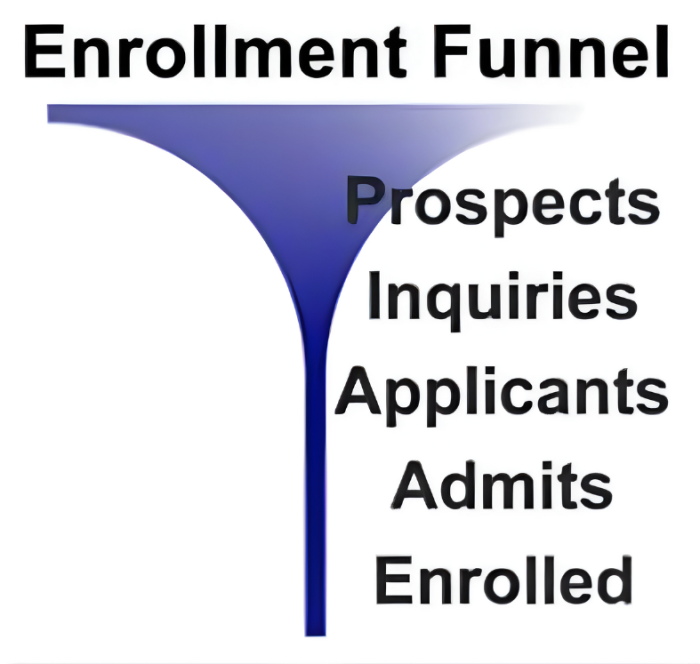
Source: HEM
Effective retargeting involves the following components. Let’s explore them!
Segmentation
Segmentation refers to dividing a larger audience of previous website visitors or users into smaller, more specific groups based on certain criteria or behaviors. This allows you to tailor their retargeting campaigns more effectively to different segments of their audience, resulting in more personalized and relevant ads.
Using segmentation in retargeting, you can increase the chances of re-engaging previous visitors and eventually converting them, as the ads are more likely to resonate with each segment’s specific interests and behaviors.
Personalization
This technique involves tailoring advertising content to individual users based on their previous interactions, behaviors, or preferences. This approach aims to deliver more relevant and engaging ads to each user, thereby increasing the likelihood of conversion.
Personalization in retargeting leverages data collected from users’ online activities, such as their browsing history, search queries, and purchase history, to create a more customized advertising experience. By delivering ads directly relevant to the user’s interests and needs, personalization can significantly improve the effectiveness of retargeting campaigns.
Frequency Caps
Frequency caps refer to the limits set by advertisers on the number of times a specific ad is shown to the same user within a certain period. Frequency caps prevent ad fatigue, which can occur when a user is exposed to the same ad too many times. This can lead to decreased engagement and potentially negative perceptions of the brand.
Creative Rotation
In a marketing retargeting strategy, creative rotation refers to regularly changing or rotating the ad content (such as images, videos, and copy) used in the retargeting campaign. A creative rotation aims to keep the ads fresh and engaging for the audience, preventing ad fatigue and maintaining the campaign’s effectiveness over time.
You can use this strategy to test different messages, visuals, and calls to action to see which resonates best with their target audience. This can also help maintain the interest of users who have been retargeted multiple times, as they are less likely to become bored or annoyed by seeing the same ad repeatedly.
Cross-Platform Retargeting
This strategy refers to targeting the same user across multiple digital platforms and devices, such as desktop computers, mobile phones, tablets, and social media networks. The goal is to provide a consistent and cohesive advertising experience that follows users as they move between platforms and devices.
By leveraging cross-platform targeting, you can increase the reach and effectiveness of their retargeting campaigns. Cross-platform targeting requires integrating data from various sources to accurately identify and track users across different platforms. This often involves using cookies, device IDs, and other tracking technologies to create a unified view of the user’s behavior and preferences.
Conversion Tracking
Conversion tracking refers to monitoring and recording users’ actions after they have been exposed to a retargeting ad. These actions, or conversions, can include a variety of desired outcomes, such as making a purchase, filling out a form, signing up for a newsletter, or downloading a piece of content.
Conversion tracking is crucial for evaluating the effectiveness of a retargeting campaign. It allows advertisers to measure the return on investment (ROI) by correlating the conversions with the specific ads or audiences that led to those actions. By understanding which ads drive conversions, advertisers can optimize their retargeting strategy, allocate their budget more efficiently, and improve overall campaign performance.
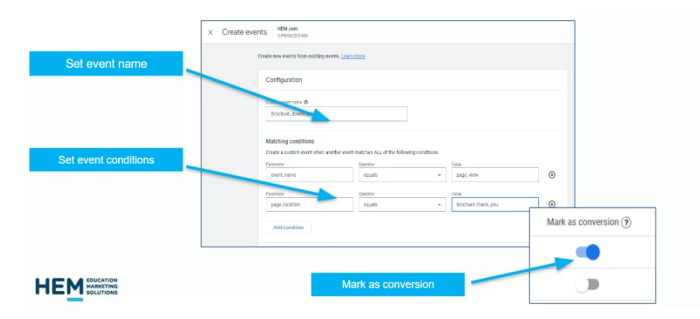
Source: HEM
Display Your Accomplishments Through Accreditation and Awards
Showcasing your accreditation and awards in ad campaigns helps to establish your institution’s credibility and commitment to excellence. As we’ve discussed, in a competitive educational market, you must differentiate yourself to attract and retain students and their parents.
Accreditation and awards serve as key differentiators, showcasing your unique strengths, achievements, and commitment to high standards. By emphasizing these accolades, your K-12 school can communicate its unique value proposition effectively, appealing to those looking for exceptional educational experiences.
Choosing an educational institution is a significant decision for students and parents alike. Accreditation and awards can play a pivotal role in this decision-making process, offering assurance of the institution’s quality and the value of the education it provides. This confidence can be a decisive factor in the selection process, making it an essential component of your advertising campaign. **
Create Targeted Social Media Campaigns
Social media is an invaluable tool for effective ad campaigns. Targeted ads on social media platforms like Facebook, Instagram, and Twitter are extremely valuable when creating data-driven campaigns, detailed analytics, flexibility, brand awareness, and the ability to implement retargeting strategies.
When used alongside organic SEO strategies for school websites, targeted social media ads are part of a robust marketing approach. Along the way, tailor your message to address parents’ concerns and questions when choosing a school. Along the way, be sure to track ad performance and adjust accordingly.
Another great way to target K-12 parents through advertising is through their children. Though parents of students in the K-12 age range are key decision-makers, the student vote has a considerable impact.
How do you market to families with children?
Remember to leverage TikTok. Notoriously popular among young, school-aged users, TikTok is an excellent tool for reaching prospective students. In addition to offering targeted ads, this platform is fantastic for any school looking to bolster its brand awareness. As the fastest-growing platform for product discovery (the product being your valuable educational offers), TikTok represents an essential tool for taking your visibility to the next level.
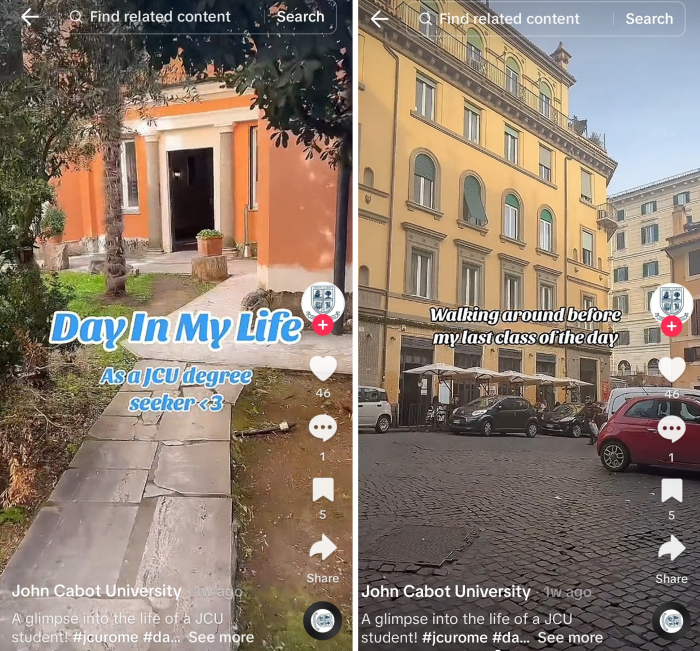
Source: TikTok
Example: John Cabot University attracts prospective students on TikTok with relatable content that highlights student life and academics. This is an excellent strategy for improving brand awareness among a young audience that, in collaboration with their parents, becomes key decision-makers for their education.
Marketing to the parents of K-12 students requires a strategic and empathetic approach that resonates with their concerns and aspirations for their children’s education. By emphasizing your school’s unique selling points, highlighting how you prioritize student safety, leveraging personal narratives, utilizing retargeting strategies, and leveraging social media, you can create a compelling advertising campaign that appeals to parents.
Remember, the key to successful marketing is to inform and inspire trust and confidence in your educational offerings. By focusing on these strategies, your school can attract and engage the families you aim to serve.







